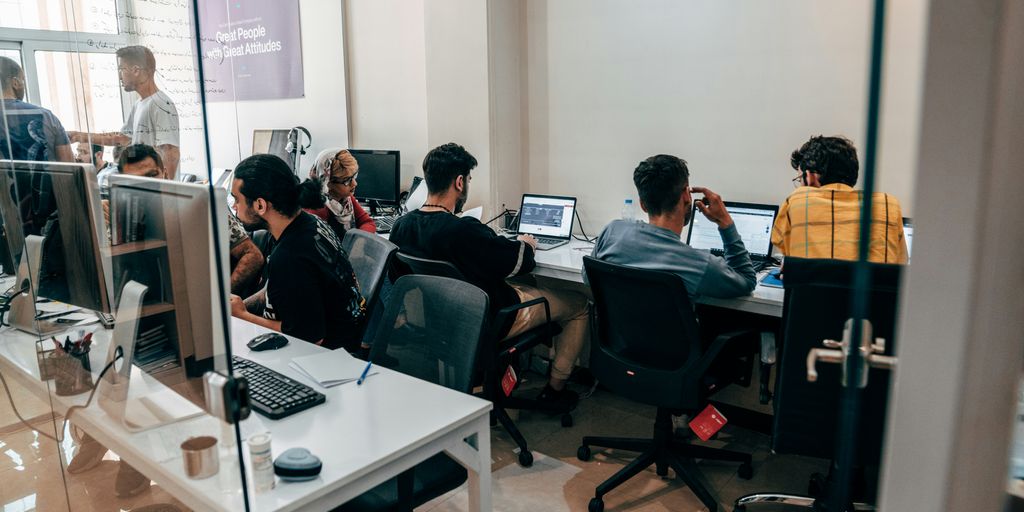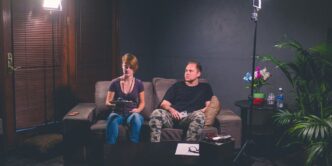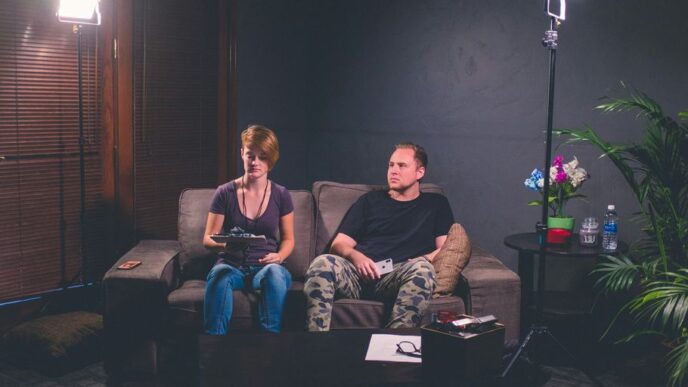So you’ve made it to the second interview – nice! This is a good sign, meaning they see something they like in you. But it also means the stakes are higher. They’re looking to dig deeper than just your resume. Think of it as a chance to really show them who you are, what you can do, and why you’re the perfect fit. Let’s break down how to nail those second round interview questions and make sure you stand out.
Key Takeaways
- A second interview means the company is seriously considering you and wants to learn more about your fit with the team and culture.
- Prepare to answer more in-depth behavioral and situational questions, using methods like CAR or STAR to structure your examples.
- Showcase your future contributions by aligning your career goals with the company’s objectives and demonstrating long-term commitment.
- Be confident and authentic; interviewers value genuine interaction and self-assurance over a overly polished persona.
- Always ask thoughtful questions about the role, team, and company to demonstrate your interest and gather information for your decision.
Understanding the Second Interview Landscape
So, you’ve made it to the second interview. That’s pretty great news, honestly. It means the folks you talked to the first time around saw something they liked, something that made them think, ‘Hey, maybe this person could actually do this job.’ It’s not a guarantee, of course, but it’s definitely a good sign you’re on the right track. Think of it like this: the first interview was about checking the basic boxes, seeing if you had the right skills and if you seemed like a decent person. Now, they want to dig a bit deeper.
What a Second Interview Signifies
Getting a second interview means the company is seriously considering you. They’ve narrowed down the applicant pool, and you’re still in the running. This round is often where they really start to figure out if you’re the best fit, not just for the job itself, but for the team and the company culture too. It’s a chance for them to get a more complete picture of who you are and how you’d fit in. It’s a positive step, showing they see potential in your candidacy.
The Deeper Dive into Your Candidacy
Unlike the first interview, which might have focused more on your resume and general qualifications, the second interview usually involves more specific, in-depth questions. You might meet with the hiring manager, potential teammates, or even higher-ups. They’ll want to hear more detailed examples of how you handle situations, how you’ve solved problems in the past, and how you might tackle current challenges the team is facing. They’re trying to understand your thought process and how you operate day-to-day. It’s about seeing how you’ll actually perform the job and contribute to their goals.
Navigating Increased Selectivity
As the interview process moves forward, it naturally becomes more selective. Each stage is designed to filter candidates, so by the second round, the competition is likely tougher. You’ll probably be talking to more people, and they’ll be looking for more specific information. This means you need to be prepared to go beyond just stating your qualifications. You’ll need to show how your past experiences directly relate to their needs and how you can make a real impact. Preparing for this stage is just as important, if not more so, than the first interview. You can find some helpful tips for preparing for your next interview here.
Mastering Behavioral and Situational Second Round Interview Questions
So, you’ve made it to the second round. That’s great news! It means they liked what they saw in the first meeting. Now, though, things get a bit more serious. They want to see how you actually handle work situations, not just what you say you can do. This is where behavioral and situational questions really come into play.
Answering Behavioral Questions with CAR/STAR
These questions are all about your past actions. They want to know how you’ve dealt with things before. The best way to answer is using a method like CAR (Context, Action, Result) or STAR (Situation, Task, Action, Result). Basically, you set the scene, explain what you did, and then talk about what happened because of your actions. For example, if they ask about a time you handled a difficult customer, you’d explain the situation (the customer was upset about X), what you did (listened, apologized, offered Y solution), and the outcome (customer calmed down, issue resolved, maybe they even became a repeat customer). It’s about showing them you’ve got the skills they need, based on real experience. Think about times you’ve had to manage your workload effectively or deal with unexpected problems. Having a few solid examples ready can make a big difference. It’s important to be specific about the actions you took and the results that followed. This helps paint a clear picture of your capabilities, much like how understanding field service management requires looking at specific operational details.
Handling Hypothetical Scenarios
Situational questions are a bit different. They’ll give you a made-up scenario and ask how you’d handle it. For instance, "What would you do if a project deadline was moved up unexpectedly?" Here, you need to show your problem-solving skills and how you think on your feet. Talk about how you’d assess the situation, communicate with your team, reprioritize tasks, and find a way to meet the new deadline. It’s not just about the answer, but your thought process. You want to show you can adapt and stay calm under pressure. Think about how you’d approach a new challenge or a conflict within a team. Your response should demonstrate your ability to think critically and propose practical solutions.
Demonstrating Integrity and Ethical Decision-Making
This is a big one, especially in a second interview. They want to know you’re someone they can trust. You might get questions like, "Tell me about a time you disagreed with a company policy" or "Describe a situation where you had to make a difficult ethical choice." Your answers here should highlight your honesty, your ability to think through consequences, and your commitment to doing the right thing, even when it’s tough. It’s okay to admit you’ve faced dilemmas, but focus on how you navigated them responsibly and what you learned. Showing you have a strong moral compass is just as important as having the right skills. It’s about building trust and showing you’ll be a reliable member of the team.
Showcasing Your Future Contributions and Growth
The second interview is where things get serious. They’ve seen you can do the job, now they want to know how you’ll grow with them and what you’ll bring to the table long-term. It’s not just about filling a spot; it’s about finding someone who can contribute to the company’s future. Think about where you see yourself in a few years and how this role fits into that picture. You want to show them you’re not just looking for a job, but a career path.
Articulating Your Vision for the Role
This is your chance to show you’ve thought deeply about the position. Don’t just repeat what’s in the job description. Instead, talk about how you’d approach the responsibilities and what specific contributions you aim to make. For instance, if the role involves improving customer retention, you might say, "I’d focus on analyzing current customer feedback to identify key pain points and then develop targeted communication strategies to address them. My goal would be to increase repeat business by 15% within the first year."
Demonstrating Long-Term Commitment
Companies want to hire people who stick around. Talk about why this particular company and role appeal to you beyond just the immediate tasks. Mention specific aspects of the company culture, its mission, or its industry position that align with your own values and career aspirations. You could say something like, "I’ve been following [Company Name]’s work in [specific area] for a while now, and I’m really impressed by your commitment to innovation. I’m looking for a place where I can build a career, and I see a lot of potential for growth here, both personally and professionally."
Aligning Your Goals with Company Objectives
This is where your research really pays off. Connect your personal career goals to the company’s broader objectives. If the company is focused on expanding into new markets, and your goal is to develop international business experience, highlight that synergy. You might explain, "My aim is to gain more experience in market analysis and strategy development. Given [Company Name]’s stated goal of expanding into the European market next year, I believe my skills in [relevant skill] could directly support that initiative, and it aligns perfectly with my own career trajectory."
Preparing Your Narrative for Key Second Interview Questions

The second interview is where things really start to get specific. They already know you can do the job, or at least they think so. Now, they want to see how you fit, how you’ll grow, and if you’ve really thought about this opportunity. It’s time to move beyond general skills and really connect your past experiences to what this company needs, and where you see yourself contributing long-term.
Refining Your ‘Tell Me About Yourself’ Response
This isn’t just a rehash of your first interview. For the second round, you need to tailor your "tell me about yourself" answer to what you’ve learned about the role and the company. Think about weaving in specific points from your previous conversations. Start with your current situation, briefly touch on relevant past experiences that highlight skills they’re looking for, and then pivot to your future, specifically how it aligns with this role and company. It’s about showing you’ve listened and are genuinely interested. For instance, if they mentioned a specific project in the first interview, you could say, "My current work in [your field] has given me experience with [relevant skill], which I found particularly interesting when you mentioned the upcoming [company project]." This shows you’re engaged and have done your homework.
Highlighting Relevant Skills and Experiences
This is where you bring out the specific examples that prove you’re the right person. Instead of just listing skills, use the CAR (Context, Action, Result) or STAR (Situation, Task, Action, Result) method to tell a story. For example, instead of saying "I’m good at problem-solving," you could say: "In my previous role at [Company X], we faced a significant challenge with [describe the situation]. My task was to [describe your responsibility]. I implemented [describe your action], which led to [describe the positive result]." This gives them concrete evidence of your abilities. You might want to prepare a few of these stories beforehand, focusing on skills that came up in the first interview or that you know are key to this role. Practicing these stories can make a big difference in how confident you appear. You can even find resources on video training to help you practice your delivery.
Connecting Your Past to the Company’s Needs
This is the crucial step where you bridge your background with the company’s future. Think about the company’s goals and the challenges they’re trying to solve. How does this role fit into that bigger picture? Your answers should demonstrate that you understand their mission and can contribute to it. For example, if the company is focused on expanding into a new market, you could talk about a time you successfully helped a previous employer enter a new territory or adapt a product for a different audience. It’s about showing them you’re not just looking for a job, but you’re looking for a place where you can make a real impact and grow with them. This shows you’ve thought deeply about how your unique background can benefit their specific situation.
Demonstrating Fit and Enthusiasm
So, you’ve made it to the second round. That’s great! Now, the interviewers are really trying to get a feel for whether you’ll fit in with the team and the company culture. It’s not just about your skills anymore; it’s about your personality and how you’ll contribute to the overall vibe.
Assessing Team and Cultural Alignment
This is where they want to see if you’re a good match for the people you’ll be working with. Think about the company’s values and how you align with them. Do you prefer collaborative environments or working more independently? What kind of work-life balance are you looking for? It’s good to have a few examples ready that show how you’ve worked well with different types of people in the past. For instance, you could mention a time you had to adapt your communication style to work with a colleague who had a very different approach. Showing you can be flexible and a team player is key here. It’s also helpful to research the company’s mission and values beforehand. For example, if a company emphasizes innovation, you might talk about a time you proposed a new idea that improved a process. This shows you’re not just looking for a job, but a place where you can contribute to their specific goals.
Expressing Genuine Interest in the Opportunity
Don’t just say you’re interested; show it! This means doing your homework. Talk about specific projects or initiatives the company is working on that excite you. Mentioning something you read on their blog or a recent news article about them can go a long way. It shows you’ve put in the effort to understand what they do and why you want to be a part of it. Think about what specifically drew you to this role and company in the first place. Was it their approach to video technology, like how Smartzer is changing the game in retail? Whatever it is, articulate it clearly. Enthusiasm is contagious, and interviewers want to hire people who are genuinely excited about the work.
Asking Insightful Questions About the Role and Company
Your questions are a big part of showing your interest and fit. Instead of asking basic questions you could find on their website, try to ask things that show you’ve been thinking critically about the role and the company’s future. You could ask about the biggest challenges the team is currently facing, or how success is measured in this position. Asking about opportunities for professional development or how the team collaborates on projects also demonstrates your forward-thinking mindset. It’s a chance to gather more information, yes, but it’s also a chance to show you’re engaged and thinking about how you can contribute long-term. Prepare a few thoughtful questions, and don’t be afraid to ask them. It shows you’re serious about the opportunity.
Strategies for Confidence and Authenticity
So, you’ve made it to the second round. That’s great news! Now, the pressure might feel a bit higher, and that’s totally normal. But remember, they invited you back because they see something they like. The key here is to build on that initial positive impression by showing up as your best, most genuine self. Confidence isn’t about being perfect; it’s about being prepared and believing in what you bring to the table.
Projecting Self-Assurance in Your Delivery
How you present yourself matters. Think about your body language and tone. Making eye contact, sitting up straight, and speaking clearly can make a big difference. It’s not about being loud or overly assertive, but rather about conveying that you’re comfortable and capable. Practicing your answers out loud, maybe even recording yourself, can help you get a feel for how you sound and identify areas where you might seem hesitant. This preparation helps you feel more at ease, which naturally boosts your confidence.
Maintaining Authenticity Throughout the Interview
While confidence is important, don’t try to be someone you’re not. Interviewers can usually spot when someone is putting on an act. They want to get to know the real you, the person who will actually be working with them day in and day out. Be honest about your experiences, both the successes and the challenges. If you’re unsure about something, it’s okay to admit it and explain how you’d go about finding the answer. This honesty builds trust and shows you’re not afraid to be human.
Balancing Preparedness with Genuine Interaction
It’s a bit of a balancing act, isn’t it? You want to be prepared with thoughtful answers, but you also want the conversation to feel natural. Think of it like this: you’ve done your homework on the company and the role, and you’ve thought about how your skills fit. Now, use that preparation as a foundation for a real conversation. When they ask a question, draw on your prepared examples, but deliver them in a way that feels like you’re sharing a story, not reciting a script. Ask follow-up questions that show you’re actively listening and thinking about what they’re saying. This makes the interview a two-way street, and it’s a great way to show your interest in the company’s social media presence.
Here’s a quick way to structure your examples using the CAR method:
- Context: Briefly describe the situation or challenge you faced.
- Action: Explain the specific steps you took to address it.
- Result: Share the outcome of your actions and what you learned.
Remember, they’ve already seen your resume and liked what they saw. Now they want to see how you communicate and how you’ll fit into their team. Be yourself, be prepared, and you’ll do great.
Wrapping Up Your Second Interview
So, you’ve made it to the second interview. That’s a really good sign, honestly. It means they see something they like in you. Now, it’s time to really show them what you’re made of. Think about what you talked about in the first meeting and build on that. Be ready to talk about specific examples of how you’ve handled tough situations at work and how you’d fit in with the team. And don’t forget to ask your own questions – it shows you’re serious about the role. Just be yourself, be confident, and remember that this is a two-way street. Good luck out there!
Frequently Asked Questions
Is a second interview a good sign?
A second interview means the company really likes you! They see you as a good fit and want to learn even more. It’s like they’ve passed the first test and now want to see if you’re the perfect match.
What happens in a second interview?
Usually, the second interview is a chance for them to get to know you better. You might talk to the hiring manager again, or meet people you’d be working with. They’ll ask harder questions to see how you handle real work situations and if you’ll fit in with the team.
Is a second interview more difficult than the first?
It’s not always harder, but the questions will be more detailed. Instead of just looking at your skills on paper, they’ll want to know how you’ll work with others, help the company reach its goals, and solve problems.
What are my chances of getting the job after a second interview?
Getting a second interview is a great sign! It means the first person who interviewed you thought you were good enough to move forward. You’re one step closer to getting the job.
How should I prepare for a second interview?
You should prepare even more than for the first interview. Research the company and the people interviewing you. Think about stories that show your skills and how they match what the company needs. Also, prepare smart questions to ask them.
Should I send a thank you note after a second interview?
Yes, you should always send a thank you note after any interview. In an email, thank them for their time, mention something specific you enjoyed talking about, and say why you’re even more excited about the job now.














